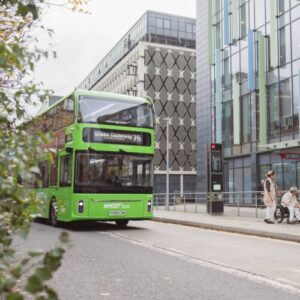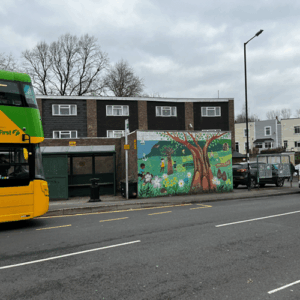
50% more passengers: Kids Go Free 182,000 times over Christmas/New Year
January marks a milestone for Kids Go Free, the popular regional offer providing free bus travel for under-16s in the...
Top line: in Denmark improving the modal share of walking and cycling among children is strongly associated with reducing motor traffic speeds along routes to schools.
Denmark is one of the richest countries of the world, and 60% of journeys to school are by foot and bicycle (mostly bicycle). At the same time Denmark has one of the best child road safety records in the western world; the fourth safest country for children among 28 OECD countries. This epitomises the concept of ‘safety in numbers’.1 Based on several studies, a recent paper describes how Denmark has obtained a good child road safety record, why Danish children choose to walk and cycle, and that they are able to do this independently of adult supervision from the age of 10 onwards.2
The Danish Road Traffic Act (1976) required the police and road administrations to implement measures that protect children against moving vehicles on their journey to and from school. The law for primary and lower secondary schools was changed in 1977. Municipalities must provide free travel between school and home for pre-school to class 3 children who have school route journeys longer than 2.5 km. The distance is 6 km for children in class 4–9 and 7 km for children in class 10. A Ministry of Justice circular in 1978 specified the concept of school routes, and when a route should be classified as dangerous. In short, the legislation means that school children must be provided with relatively safe routes to school. 50% of Danish children travel less than 1.5 km to school.
Child road safety has predominantly been improved due to many implemented local safety measures such as campaigns and but mainly physical safe routes to school projects. These include speed reducing measures and signalisation of junctions. Many school route studies are part of the development of local road safety plans. The overlap of high-risk locations and spots, where children feel unsafe, is significant. School route studies are, therefore, very valuable in the development of local road safety plans, because the number of crashes is often so low that it is impossible to identify ‘black spots’ from casualty data alone. All municipalities that make school route studies also implement traffic calming and other safety measures. The level of local funds to safety measures seems to be important in reducing casualties.
Traffic calming with emphasis on speed reducing measures has a beneficial safety effect and results in children shifting from car and bus on school journeys to the bicycle as they age (25% each for walking and cycling at age 5-6 and 50% by bicycle by age 15-16). The reason for an almost unchanged long-term level of cycling on school journeys in Denmark may be that effects of traffic calming projects have offset other effects, not least more car traffic and higher car ownership. However, attitudes and culture seem to be important factors for transport mode choice among children. Additionally, the targeted safety programmes seem to have beneficial safety effects for other groups as well as children.
1 See Essential Evidence No.1 http://www.bristol.gov.uk/ccm/content/Transport-Streets/Walking-Cycling/cycling-in-bristol/essential-evidence/essential-evidence.en
2 Jensen, S. 2008 How to obtain a healthy journey to school, Transportation Research Part A, 42: 475–486.

January marks a milestone for Kids Go Free, the popular regional offer providing free bus travel for under-16s in the...

Many of the West’s bus passengers are seeing improvements to bus information across our region, with around 150 new information...

Visitors to Bath can enjoy free Park & Ride travel from 19 to 24 January, thanks to the West of...

Plans for a new transport hub in Pill, North Somerset, are moving forward with works set to start early January...

New funding will improve walking routes in Midsomer Norton, helping children travel to school more safely.